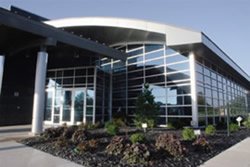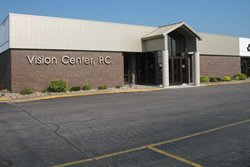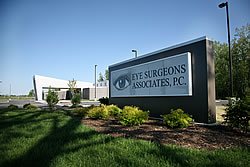Eye Surgeons Associates has proudly restored vision to tens of thousands of Quad City area residents for over three decades. We introduced the most advanced techniques to the region such as outpatient surgery, topical (no shot) anesthesia, suture-free incisions, and phacoemulsification, with world-class results.
More recently after carefully monitoring the international development of the femtosecond laser for refractive cataract procedures and with hundreds of thousands successfully performed worldwide, ESA in partnership with Spring Park Surgery Center and Genesis were the first to acquire a femtosecond laser and introduce laser refractive cataract surgery to the Quad Cities region.
Today, patients based on their eye health, vision goals, and input from their surgeon can choose to have traditional cataract surgery or laser-assisted cataract surgery.
Traditional Cataract Surgery
In an outpatient procedure, traditional cataract surgery uses handheld instruments. A blade cuts the self-sealing incision in the clear cornea and manual forceps grasp and fashion a circle opening in the bag of the cataract. An instrument working like a microscopic jackhammer breaks up the cataract with sound waves to allow the cloudy lens material to be vacuumed out of the eye. Finally, the surgeon implants a monofocal (one focus) intraocular lens (IOL) into the cleaned bag of the now removed cataractous lens.
It is intended to last a lifetime. Patients typically have both eyes corrected for clear distance vision and continue to rely on glasses (readers, bifocals, trifocals, or progressive lenses) for optimal distance, intermediate, and near vision.
Your medical insurance and/or Medicare covers traditional cataract surgery and standard monofocal (one focus) IOLs with the goal of restoring your best vision in glasses, which will be required, for most, if not all daily tasks.
Laser Cataract Surgery with Advanced Technology Treatment
Laser surgery can be done with any Advanced Technology IOL or refractive treatment to reduce or eliminate the need for glasses. The laser allows your surgeon to plan and perform a procedure that is completely customized for each of your eyes. The laser improves precision and reproducibility in creating blade-free incisions, as well as, in other steps of the cataract removal. The laser’s accuracy is approximately ten times greater than manual techniques’.1,2 After creating the corneal incisions, the laser creates a fast, precise circular opening in the bag containing the cataract.
The laser then softens and divides up the cataract for the surgeon to remove the cloudy material. Laser technology makes breakup and removal of the cataract safer, easier, and gentler to the patient’s eye.3 The laser reduces the amount of ultrasound energy (microscopic jackhammer sound wave energy) used to break-up the cataract by 43%, reducing the risk of cell loss.3 Laser treatment causes little to no discomfort for patients.
1. Friedman, NJ, et al., “Femtosecond Laser Capsulotomy,” Journal of Cataract & Refractive Surgery, 2011 July; 37(7): 1189-1198
2. Palanker, D., et al., “Femtosecond Laser-Assisted Cataract Surgery with Integrated Optical Coherence Tomography,” Science Translational Medicine, Vol 2 Issues 58: 1-9 (2010)
3. Nagy Z. Initial clinical evaluation of an intraocular femtosecond laser in cataract surgery. Refract Surg. 2009 Dec, 25 (12): 1053-60.
LenSx® Laser – Important PATIENT Product Information
CAUTION: The LenSx® Laser is restricted by law to the sale and use by, or on the order of, a physician.
DESCRIPTION: The LenSx® Laser is for use in patients undergoing cataract surgery. The laser is used as a tool to break up a cataract and to create incisions in the cornea. The LenSx Laser is also be used for the creation of corneal flaps in LASIK surgery. The LenSx Laser uses accessories called Patient Interfaces to hold the eye steady during a procedure.
WARNINGS / PRECAUTIONS: The LenSx Laser Patient Interface and the LenSx Laser SoftFit Patient Interface hold an eye by applying light suction. Some bleeding and foreign body sensation may occur. As with any cataract surgery, there are risks involved. These risks may include but are not limited to infection, pain, corneal abrasion, and capsular tear. Surgery with the LenSx Laser is not for everyone. Conditions such as corneal opacity, glaucoma, a poorly dilating pupil, and previous corneal surgery may preclude the use of the LenSx Laser. Your doctor can determine if the LenSx Laser is right for you.
The accuracy of these steps including the precise circular opening of the cataract bag promotes optimal positioning of the Advanced Technology IOLs to reduce or eliminate glasses. These lenses depend upon a level of precision accuracy and customization that traditional manual surgery struggles to provide.
The additional diagnostic and laser surgical services, as well as, the Advanced Technology IOLs are expenses beyond traditional cataract surgery and are not covered by insurance. Eye Surgeons Associates also offers monthly payment options for both long and short-term financing through CareCredit.
If you are employed and have participated in an employer-sponsored “cafeteria” or “flex” medical benefit plan, the IRS has determined that vision correction is a qualified deductible medical expense. Advanced Technology Lenses and associated services qualify for payment.
Please check with your insurance company or your employer’s human resources department prior to making your appointment.
Our Pledge To You
Through skill, knowledge, and understanding of your needs, our team of physicians, technicians, and staff strives to provide the most efficient and caring rehabilitation of vision after cataracts. If you have any questions about the surgery, please feel free to contact your doctor or their staff.




